Your daily dose of Product Management Goodness
Want to know more?
We would love to hear your questions and suggestions for topics you would like to see covered in our future blog posts, so don't be shy and get in touch!

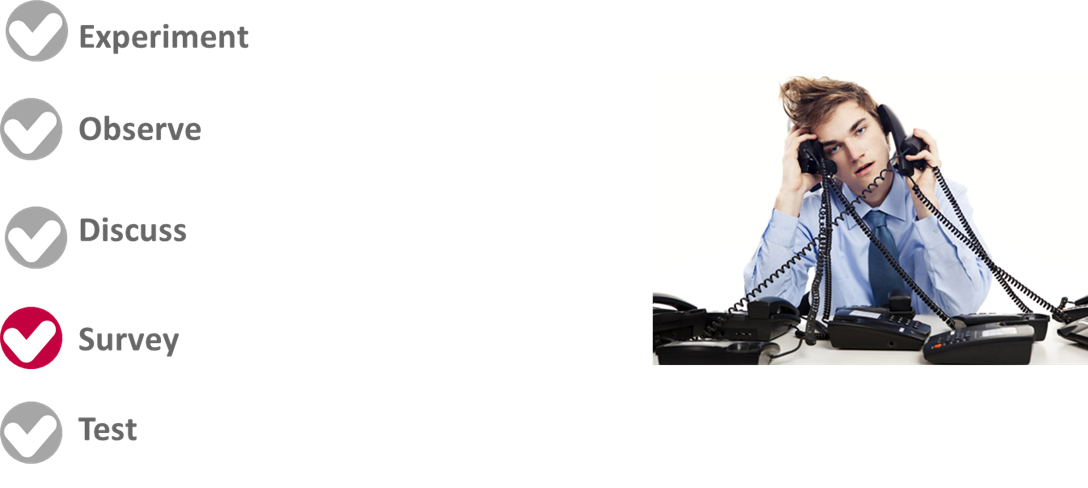
Technique 4 of 4
Finally, we can use surveys to build a quantitative view of our market. These could be online, over the ‘phone or even postal, but we need to be aware that these type of surveys have the greatest potential for causing resentment on the part of those surveyed and can have very low (less than 1%) response rates. Additionally, respondents may not be representative of the market with just the extremes feeling motivated to complete the survey
read more
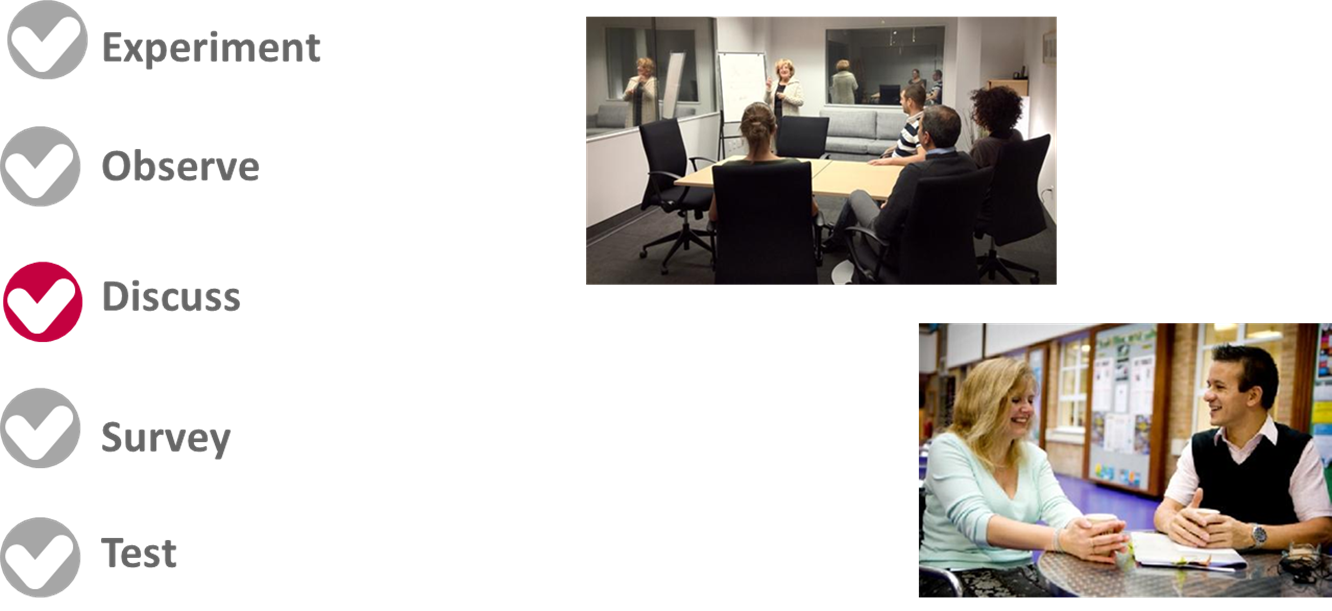
Technique 3 of 4
A one-on-one either in face-to-face or virtual form is a great way of conducting market research . People are more willing to respond in more depth, detail and honesty outside of a group dynamic. But focus groups also fall into this category – a group of 6 to 12 people who are brought together by researchers to discuss a particular situation or reactions to a product.
More than any other technique, the researcher can impact the outcome. Individuals can build a view of the researchers opinion and modify their response based on that. For example, if interviewees believe the researcher has strong concerns about the environment then some of the cohort will modify their views in an attempt to cause less offence to the researcher.
read more
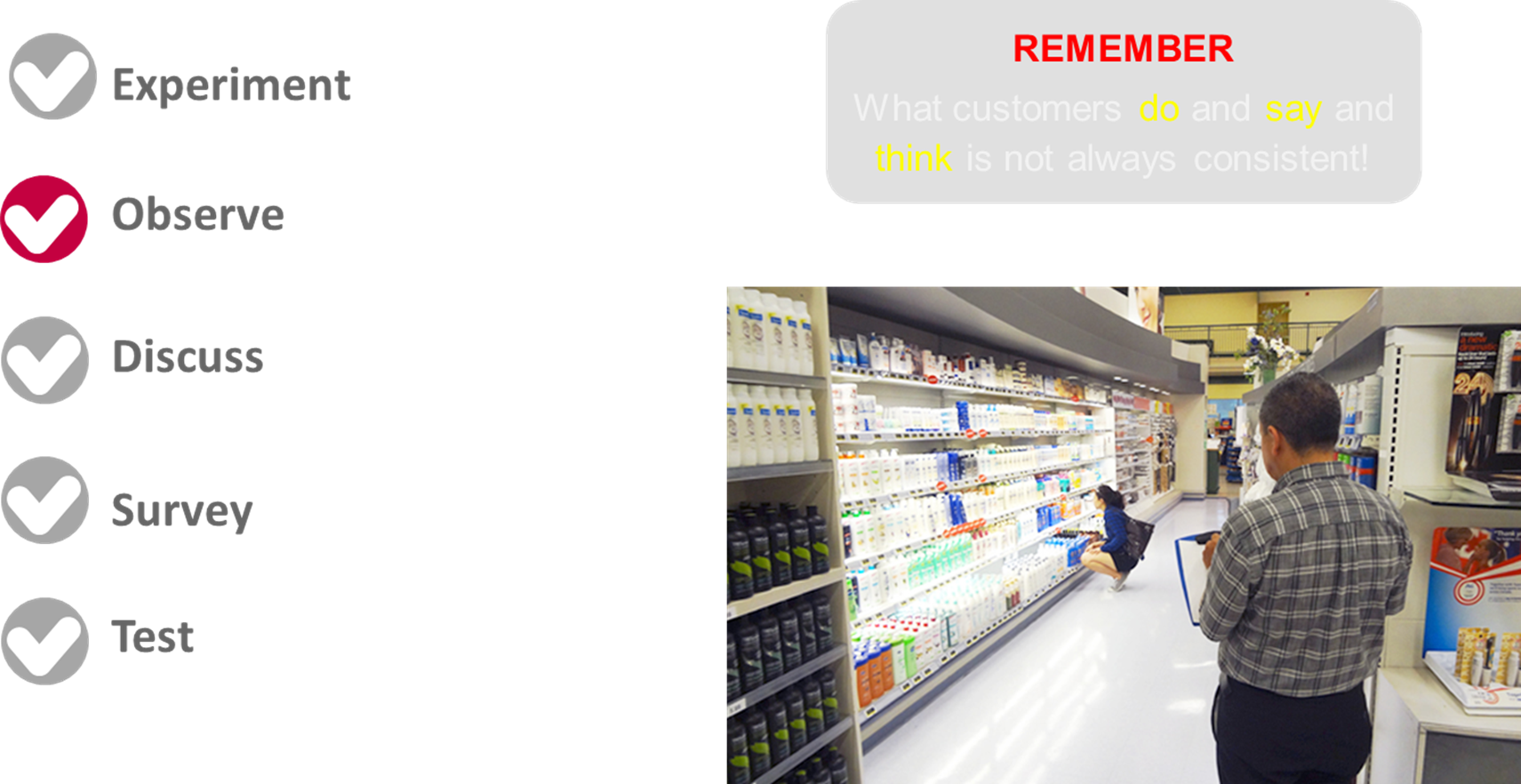
Technique 2 of 4
Observational market research is a technique which involves directly observing consumers or another target audience in their natural environment - for instance, watching how shoppers stop outside a fashion retailer, what they are drawn to in a window display and which direction they go after entering the store. But be aware OBSERVING is not the same as UNDERSTANDING.
read more
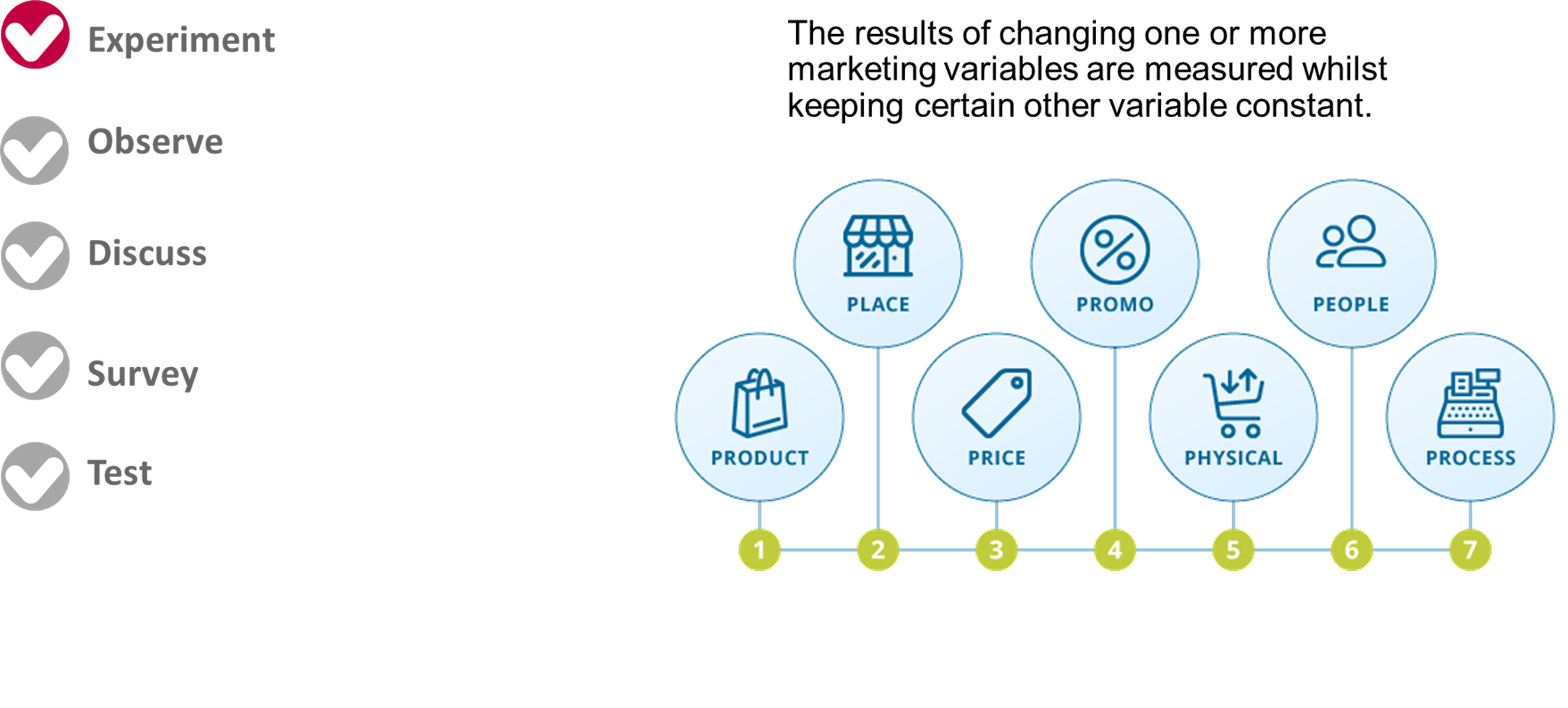
Technique 1 of 4
Experimental market research is a useful refinement and validation technique. Take two market research groups and change one single variable within the 7 P model. For example, the same product is presented, but the price point is changed. We then gauge reaction to this change.
read more
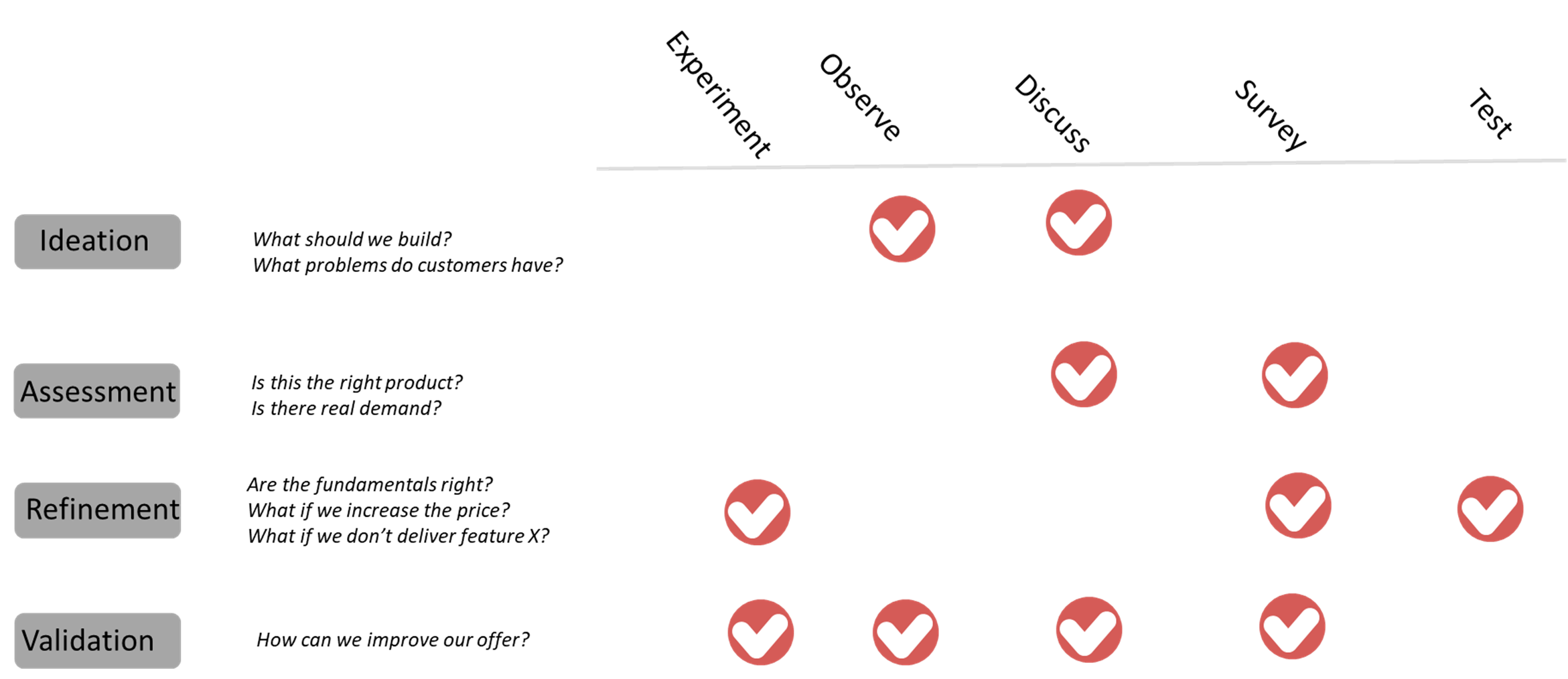
Market Research
Market research is a core product management discipline. It helps us build an evidenced-based view of our market, meaning we’re more likely to make the right decisions more often. So what do we mean by market research? There are many techniques/methods we can use but which is the right one? The graphic below summarises the type of market research that is likely to be most effective at each stage of product development from Ideation through to validation. Over the following days we’ll explain each technique.
read more
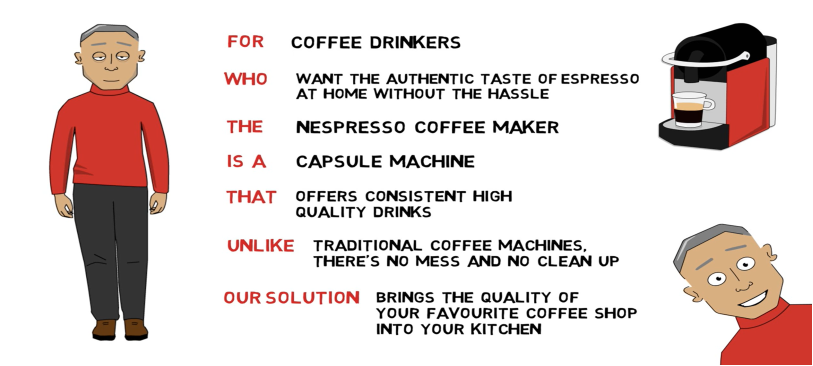
Core Value of your product?
Can you describe the core value of your product?
Sounds simple, but some product managers struggle to get to a clear, coherent and concise statement. We use a structure, shown here for a nespresso coffee maker – replace the black text with your words and you’ve got a first-pass value proposition statement.
read more
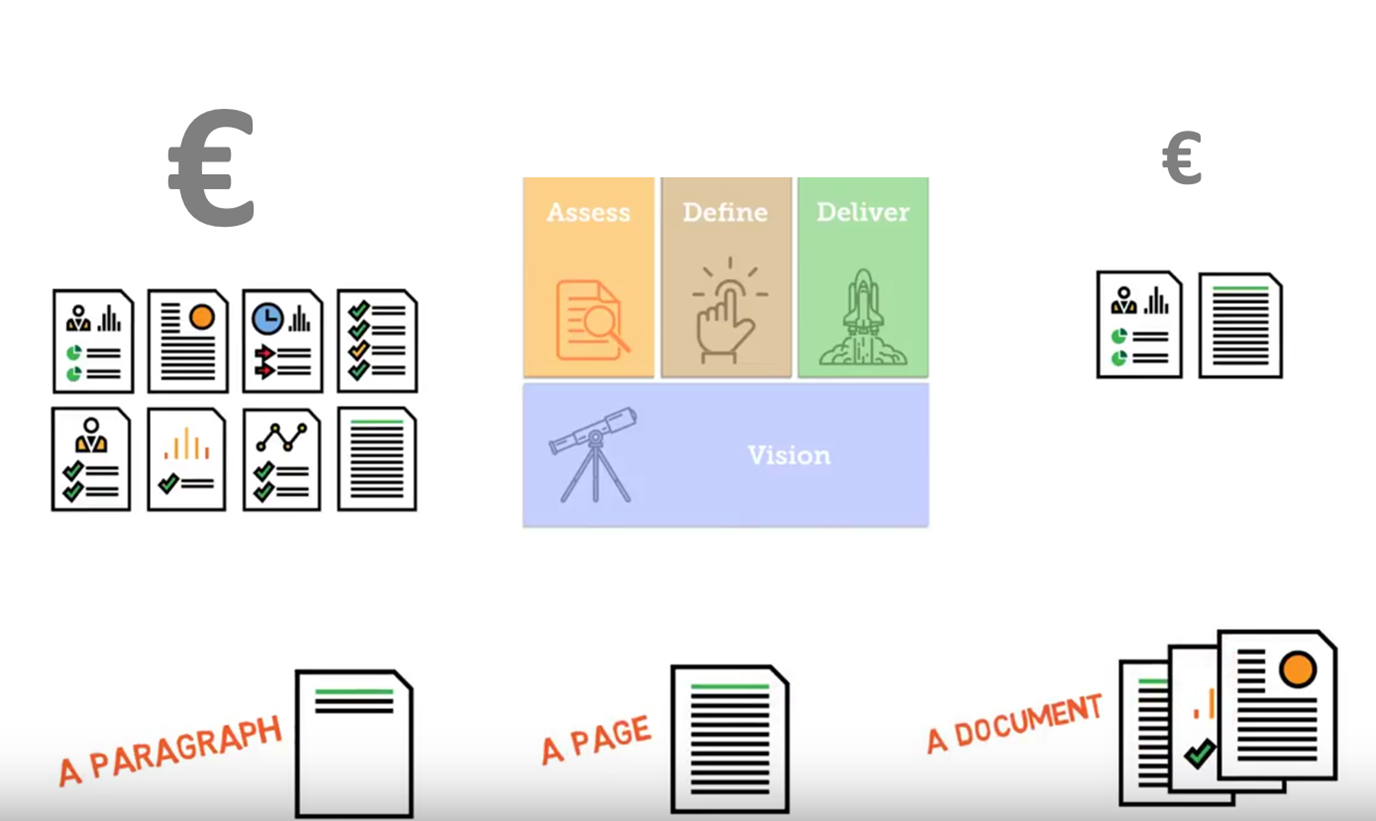
Big versus Small
How should product management approach a big idea versus a small idea?
The answer is pretty simple; the process remains the same but the depth and detail is different. We assess, define and deliver all ideas, but we might do that work in a day or a week or a month depending on the scale, the effort, and the risk. And the business case? Its scale is appropriate to risk and reward - no management team wants a 100 page document for a trivial upgrade or a single paragraph when they’re taking a huge risk.
read more
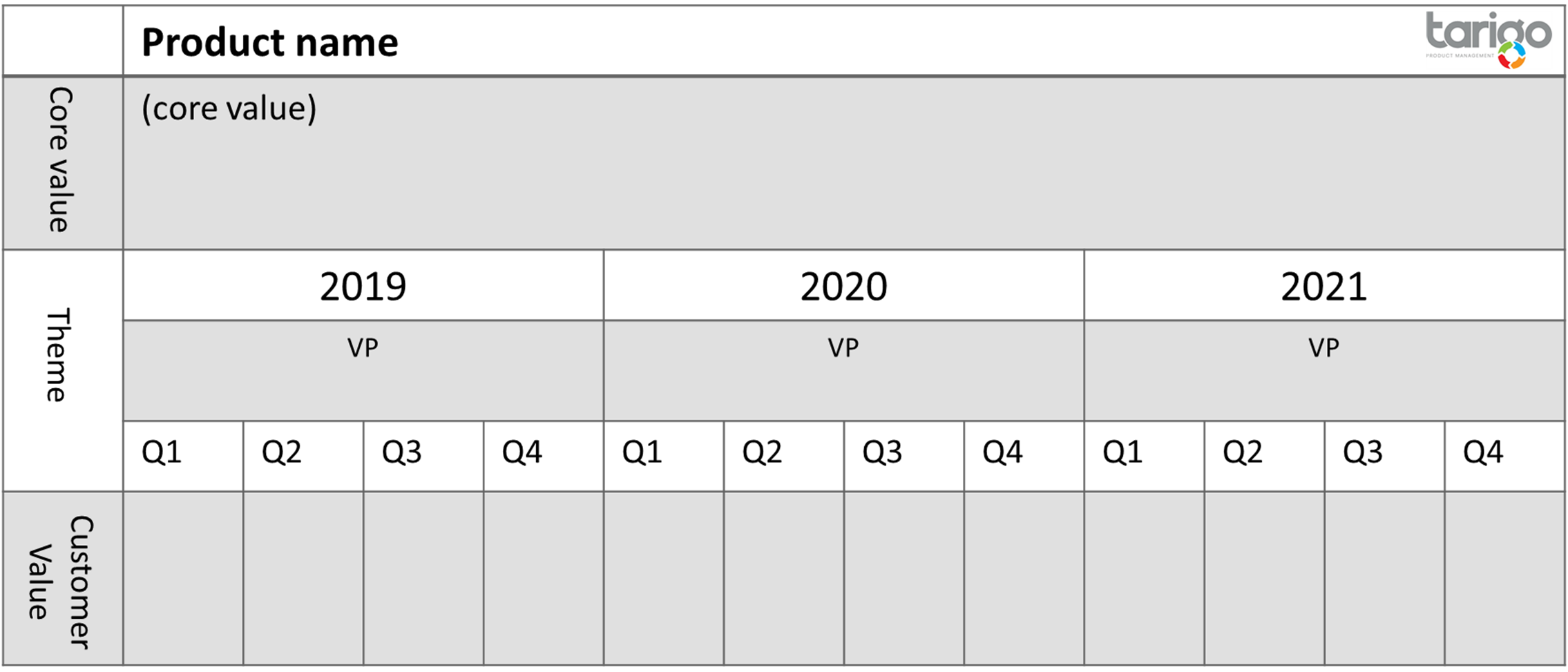
Turning vision into action.
Building a vision is great.
But Product managers need to turn that vision into action – work out how to deliver customer value in incremental as we work towards that vision. We use this vision template to help:
1. Describe the core value you plan to offer (your vision)
2. Work out what the annual goal needs to be that help move towards that vision
3. Describe the incremental customer value you deliver each quarter that move towards your annual goal
read more
Check out the Archive